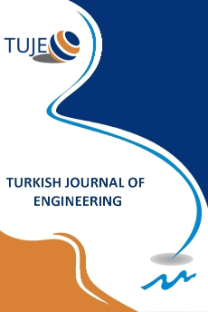CARBONATION RESISTANCE OF SLAG MORTARS ACTIVATED BY DIFFERENT ALKALI ACTIVATORS
CARBONATION RESISTANCE OF SLAG MORTARS ACTIVATED BY DIFFERENT ALKALI ACTIVATORS
Carbonation, Mortar Slag, Activator,
___
- ASTM C 33 (2005). Standard specification for concrete aggregates, Annual Book of ASTM Standards, West Conshohocken, USA.
- ASTM C 989 (1994). Standard specification for ground granulated blast furnace slag for use in concrete and mortars, Annual book of ASTM Standards, West Conshohocken, USA.
- Atiş, C. D., Bilim, C., Çelik, Ö. and Karahan, O. (2009). “Influence of activator on the strength and drying shrinkage of alkali-activated slag mortar.” Construction and Building Materials, Vol. 23, No. 1, pp. 548-555.
- Bernal, S. A., Gutierrez, R. M., Provis, J. L. and Rose, V. (2010). “Effect of silicate modulus and metakaolin incorporation on the carbonation of alkali silicateactivated slags.” Cement and Concrete Research, Vol. 40, No. 6, pp. 898–907.
- Bilim, C. and Atiş, C. D. (2012). “Alkali activation of mortars containing different replacement levels of ground granulated blast furnace slag.” Construction and Building Materials, Vol. 28, No. 1, pp. 708-712.
- Bilim, C. (2016). “The fire resistance of alkali-activated slag mortars.” Çukurova University Journal of Engineering and Architecture, Vol. 31, No. 2, pp. 67-75.
- Bilim, C. (2006). The use of ground granulated blast furnace slag in cement based materials, PhD Thesis, University of Çukurova, Adana, Turkey.
- Byfors, K., Klingstedt, V., Lehtonen, P. Y. Y. and Rombern, L. (1989). “Durability of concrete made with alkali activated slag.” Proc., 3rd International Conference on Fly Ash, Silica Fume, Slag and Natural Pozzolans in Concrete, American Concrete Institute, Trondheim, Norway, pp. 1429-1466.
- Collins, F. G. and Sanjayan, J. G. (1999). “Workability and mechanical properties of alkali activated slag concrete.” Cement and Concrete Research, Vol. 29, No.3, pp. 455-458.
- Erdoğan, T. Y. (2010). Concrete, METU Press, Ankara, Turkey.
- Neto, A. A. M., Cincotto, M. A. and Repette, W. (2008). “Drying and autogenous shrinkage of pastes and mortars with activated slag cement.” Cement and Concrete Research, Vol. 38, No. 4, pp. 565-574.
- Palacios, M. and Puertas, F. (2007). “Effect of shrinkagereducing admixtures on the properties of alkali-activated slag pastes and mortars.” Cement and Concrete Research, Vol. 37, No. 5, pp. 691-702.
- ISSN: 2587-1366
- Yayın Aralığı: 4
- Başlangıç: 2017
- Yayıncı: Mersin Uüniversitesi
Ömer UÇTU, İbrahim SEVİM, Bülent KARATAŞ, Burak ŞAHİN
CARBONATION RESISTANCE OF SLAG MORTARS ACTIVATED BY DIFFERENT ALKALI ACTIVATORS
Bahadır K. Körbahti, Mustafa Ceyhun Erdem
Berat Baris BULDUM, Suleyman Cinar CAGAN
TREATMENT OF BIODIESEL WASTEWATER USING YELLOW MUSTARD SEEDS
